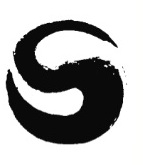Yang Style Tai Chi – Hollowing the Chest to Raise the Back
During a recent seminar in Avignon, France, I was in the front passenger seat of a car taking me to the seminar when we were hit head-on by a drunk driver. The seat belt saved my life, but my sternum was fractured by the shoulder strap.
During my tiger style days, this would have meant the end of practicing tai chi for up to two months because my old idea of “hollowing the chest to raise the back” meant pulling in my chest and dropping my shoulders. This would be excruciating with a broken sternum. However, I was able to continue my practice as soon as I left the hospital.
Why? Because the true physical act of “hollowing the chest” has nothing to do with collapsing the breastplate and sternum of the body. It is a move that involves engaging the muscles from the Dan Tien through the iliopsoas muscles up to the deep muscles of the thoracic spine. Many Yang style practitioners collapse their chest thinking they are obeying this most important Yang principle. This is a terrible misunderstanding of the principle and leads to bad posture, a weak and hunched back, and strain on the rotator cuffs of the shoulder joints.
Because of my accident, I was forced to keep my breastplate and sternum fixed as if it were cast like a broken arm or leg. The result – my “hollowing the chest and raising the back” got better and stronger as I recovered from my injury.


 Bob Boyd
Bob Boyd